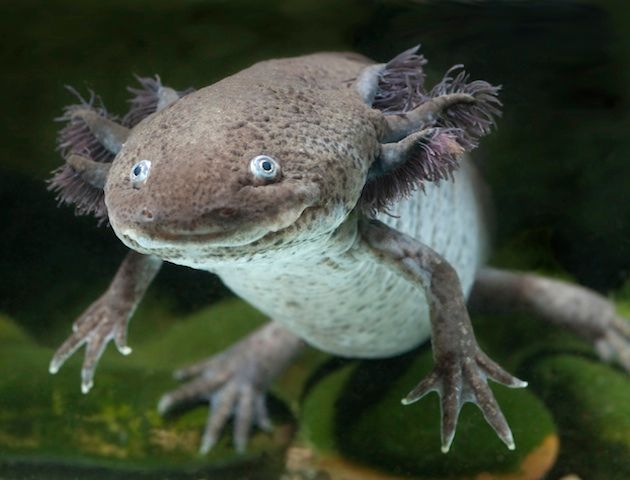Mexican axolotls: Photography

The Axolotl, Ambystoma mexicanum, is also known as the Mexican walking fish, but it is a salamander, an amphibian related to frogs and toads. The name axolotl comes from the Aztec language, Xolotl was the god of death, but it is also translated as water dog. The axolotl was native to both Lake Xochimilco, and Lake Chalco, high altitude freshwater lakes in Mexico, but only a few canals of Xochimilco remain. Due to the loss of habitat, only a few axolotl remain in the wild and the axolotl is on the endangered species list. They are also sold in Mexican markets as food. Huge numbers are bred in captivity as laboratory animals. Although some axolotl are returned to the wild, the species survival in the wild is uncertain because the remaining waters where they live are threatened by development of Mexico City. The axolotl has unusual healing and regeneration capability, and is able to completely regrow a limb.Axolotls are neotenic,meaning that they reach sexual maturity without undergoing metamorphosis , so the adults remain aquatic and gilled and retains the larval form throughout its life. Axolotls are adult at about 18 months, and can reach 18 inches long although 9 inches is more common. Axolotls have external gills and a caudal fin extending from behind the head to the vent. Their heads are wide, and their eyes are lidless. They feed by suction. External gills are used for respiration, although they may also gulp air from the surface. Axolotls have four colorations. Two naturally occurring colors are shades of brown usually with spots, and black. There are also two mutants colorations, pale pink with black eyes, and albino which is golden, tan or pale pink with pink eyes.